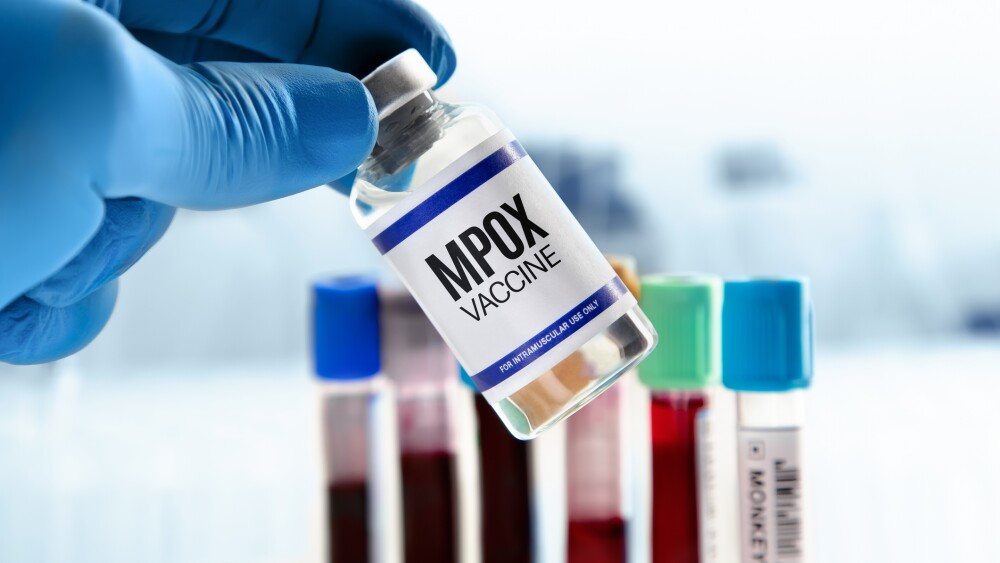COVID-19 is much more than a respiratory illness, and many of its longer-term effects and secondary issues are often puzzling. For that and more research news, continue reading.
COVID-19, as everyone knows by now, is much more than a respiratory illness. And many of its longer-term effects and seemingly secondary issues are often puzzling, such as an increase in new-onset diabetes among people with COVID-19 infections. New research has gained a better understanding of why. For that and more research news, continue reading.
COVID-19 and New-Onset Diabetes
An increase in new-onset diabetes has been associated with COVID-19 infections, although why is largely unknown. Researchers at Osaka University in Japan appear to have found a link. The key seems to be interfering with insulin signaling. COVID-19 can cause problems with metabolism, even though it is generally viewed as a respiratory illness. Although by now, it’s clear that the virus and resultant disease has far-reaching effects. They published their research in the journal Metabolism.
“The insulin/IGF signaling pathway is a key pathway in the regulation of energy metabolism and cell survival,” Jihoon Shin, Ph.D., first author of the study, said. “Therefore, we suspected that SARS-CoV-2 affects this signaling pathway to cause problems with blood sugar regulation.”
They analyzed gene expression in patients in addition to in vivo and in vitro models of SARS-CoV-2 infection. They were scanning for noticeably over- or under-expressed genes compared to uninfected patients, animals or cells. The SARS-CoV-2 infection affected the expression of insulin/IGF signaling pathway components in the lung, liver, adipose tissue, and pancreatic cells. The changes were attributed partially to activation of interferon regulatory factor 1 (IRF1).
IRF1 expression is elevated in older patients, men, obese people, and patients with diabetes. The synergistic effects of age, male sex, obesity and diabetes with the virus demonstrated IRF1 expression increased, suggesting why these cohorts are more vulnerable to the disease. Also, critical COVID-19 patients had higher IRF 1 expression and lower insulin/IGF signaling pathway genes in the blood compared to noncritical patients. They found that treating infected cells or an animal model with hormonal factors that decreased IRF1 expression improved insulin/IGF signaling.
“Our findings suggest that SARS-CoV-2 infection impairs insulin/IGF signaling by increasing IRF1 expression, thereby disrupting blood sugar metabolism,” Shin said. “Decreasing IRF1 expression by treatment with factors such as dihydrotestosterone and dexamethasone could help mitigate the effects of COVID-19.”
Older Drug Appears to Improve Checkpoint Inhibitors
Researchers with Degron Therapeutics published a study suggesting an older drug, Bristol Myers Squibb’s Revlimid (lenalidomide), a molecular glue degrader of IKZF1 and IKZF3, can improve anti-PD-1 checkpoint inhibitors to treat cancer. The study found that lenalidomide bypasses CD28 co-stimulation to reinstate PD-1 immunotherapy by activating Notch signaling.
In short, lenalidomide appears to help checkpoint inhibitors work better. The drug was approved in 2005 to treat myeloma and has since been indicated for multiple myeloma, deletion 5q myelodysplastic syndrome (MDS), mantle cell lymphoma, and other hematological tumors. PD-1 is a checkpoint protein on T cells that typically acts as an off switch that prevents T cells from attacking other cells in the body. By inhibiting PD-1, it allows T cells to better attack the cancer cells. The research was published in Cell Chemical Biology.
Flu Vaccine Associated with 40% Lower Risk of Alzheimer’s Disease
A study by the University of Texas Health Science Center at Houston found that people who received at least one flu vaccine were 40% less likely to develop Alzheimer’s disease over the course of four years. They evaluated a large nationwide sample of U.S. adults aged 65 and older. This study came two years after the same researchers identified a possible association between the flu vaccine and decreased risk of Alzheimer’s, only in a much larger sample size, which included 935,887 people who received flu vaccines and 935,887 people who did not.
About 5.1% of those vaccinated during the four-year follow-up appointments developed Alzheimer’s, while 8.5% in the non-vaccinated group developed Alzheimer’s. The mechanism isn’t understood, and other vaccines appear to offer some protection against Alzheimer’s, so they suspect it might have to do with how the immune system is activated via vaccines.
How T-Cells Are Trained to ID Pathogens
Investigators with Harvard Medical School identified a new mechanism that trains immature immune cells to ignore the body’s tissues while attacking pathogens. In this process, specialized thymus cells “pose” as different tissues, preparing the immune system to tell the difference between “friend and foe.” Then, immune cells that react mistakenly to the body’s proteins are eliminated or given other jobs. T-cells originate and are trained in the thymus.
The thymus recreates your body, presenting different types of tissue proteins to the immature T-cells to teach them to ignore these cells. They note that it glitches in this recognition system that can lead to autoimmune diseases. The cells in the thymus that can mimic different tissues are called mimetic cells, and they work by co-opting various transcription factors, essentially taking on the identities of tissues such as skin, lung, liver or intestine. If these nascent T-cells mistakenly react against the self-proteins, they either are given a command to self-destruct or are repurposed into other types of T-cells that put a brake on other immune cells.
Common HIV Drug Improves Cognition in Mouse Model of Down Syndrome
Scientists with the Center for Genomic Regulation and the IrsiCaixa AIDS Research Institute tested lamivudine, a common antiretroviral drug for HIV, in a mouse model of Down syndrome. They found that it improved cognition in the mice. Confirmatory studies in humans would have to be conducted to see if it had the same effect. Retrotransposons are segments of DNA that change location within the genome by making RNA copies of themselves that switch back into DNA at another location.
They can insert themselves into specific areas of the genome and sometimes position themselves in gene-promoting regions associated with neurodegenerative disease, stimulating their activity. Retrotransposition rates increase with age and cellular senescence. HIV and retrotransposons require the same molecule to make copies of themselves, reverse transcriptase. Lamivudine is a reverse transcriptase inhibitor against HIV and has been shown to decrease the activation of retrotransposons in aged mice.
A Universal Flu Vaccine?
The National Institutes of Health Clinical Center in Bethesda, Maryland, has launched a Phase I trial of a novel, universal flu vaccine. The vaccine candidate, BPL-1357, developed by researchers at the National Institute of Allergy and Infectious Diseases, is a whole-virus vaccine engineered with four non-infectious, chemically inactivated strains low-pathogenicity avian flu virus. In animal studies, all mice received two shots of the vaccine given either intramuscularly or intranasally survived later exposure to lethal doses of each of six different flu virus strains, including subtypes not included in the vaccine. They also conducted similar challenge tests in ferrets with similar results.
The volunteers in the study will be randomized 1:1:1 to receive two doses of placebo or vaccine 28 days apart: Group A will receive it intramuscularly with intranasal saline placebo; Group B will receive the vaccine intranasally with intramuscular placebo; Group C will receive placebo both intramuscularly and intranasally. The study will be blinded.
“With the BPL-1357 vaccine, especially when given intranasally, we are attempting to induce a comprehensive immune response that closely mimics immunity gained following a natural influenza infection,” Dr. Matthew J. Memoli, M.D., the NAIAD investigator leading the study, said. “This is very different than nearly all other vaccines for influenza or other respiratory viruses, which focus on inducing immunity to a single viral antigen and often do not induce mucosal immunity.”





